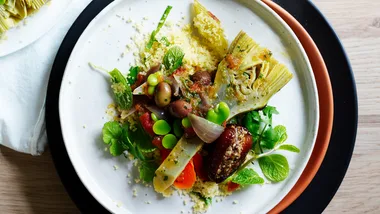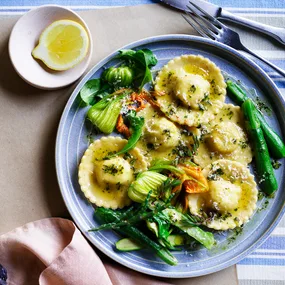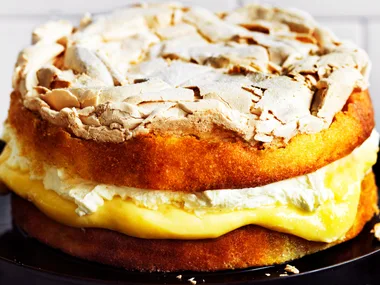Ahana Dutt, junior sous-chef at Sydney’s Firedoor, inherited her love of cooking from her mother. “I always watched her, which is how I learnt,” she says. “She was always in the kitchen, and anytime she was there I was there.”
Dutt initially dreamed of becoming a dancer before quickly realising her talents in the kitchen. “I just wanted to work in a field I really loved,” she says. “Life’s hard enough as it is, so why would I not do something that I really enjoy?”
From making traditional savoury shortbreads in her Kolkata home, to working alongside Lennox Hastie in the Firedoor kitchen, Dutt has come a long way in a short period of time. The 27-year-old made her entrance into the hospitality world via a hotel management course in Mumbai. In 2014, she moved to Australia after being accepted at Sydney’s Le Cordon Bleu.
“When I came to Australia, there was so much opportunity here. And there still is because the food scene is still growing. There’s so much diversity here, too. And so many new things to learn.”
After graduating, Dutt completed a stint with the Keystone Group before applying for a job at Firedoor – a role that continues to influence her cooking style. “Firedoor is so different from any traditional, conventional kitchen. You really appreciate the ingredients and all the effort that goes into making anything – even for boiling water, you have to build a fire.”
Now, her cooking is all about simplicity, while imparting unique elements from her Bengali heritage. And her mantra? Let things be. “I like letting ingredients and produce speak for themselves, rather than making something really complex.”

Firedoor junior sous-chef Ahana Dutt.
(Photo: Nikki To)She describes maache’r paturi as “very traditional Bengali” dish. “It’s normally just a piece of fish coated in a coconut and green-chilli mustard paste, and wrapped in banana leaf,” she says. “I’ve done a modern take.”
Words by Georgie Meredith.
Start this recipe 3 days ahead to make the green-peppercorn mustard.
Ingredients
Method
Frozen fresh coconut is available from Asian supermarkets. Make sure all utensils used are very clean to avoid cross-contamination. Do not use an air-lock seal on the jar for fermenting the green-peppercorn mustard. Any extra mustard can be fermented at room temperature for another 5-7 days; after that it should be refrigerated. To make wrapping easier, hold the banana leaves over a gas flame to soften and become more flexible.
Notes
 James Moffatt
James Moffatt









